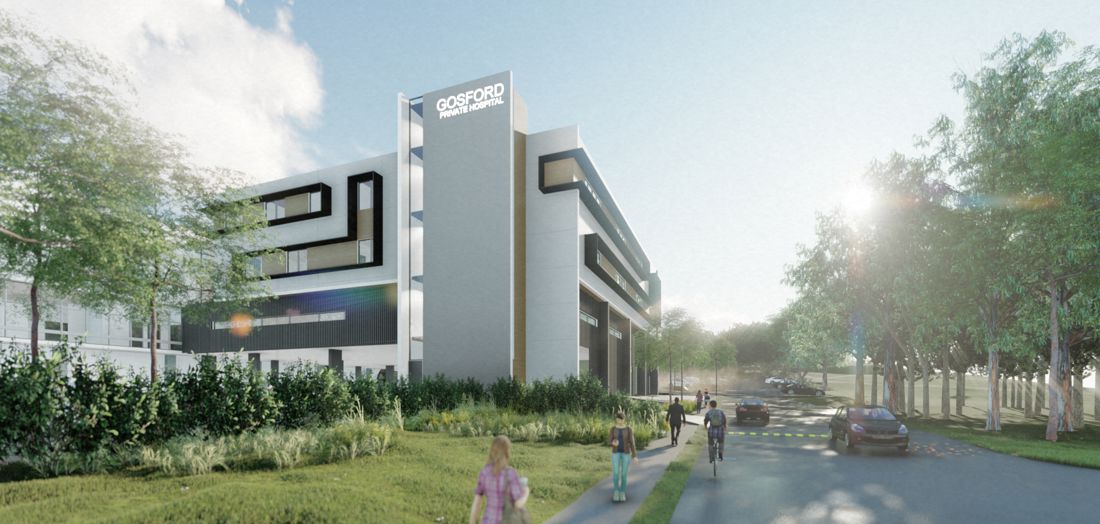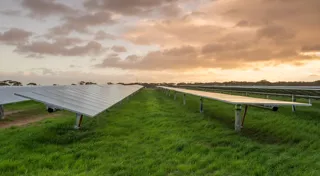CEFC investment injects energy efficiency into Barwon Healthcare Property portfolio

17 September 2019
Healthcare and medical centres across Australia will be more comfortable and energy efficient under a plan to reduce energy consumption backed by the CEFC’s latest investment in the healthcare property sector.
The CEFC is taking an $80 million equity stake in the Barwon Institutional Healthcare Property Fund which has 14 healthcare property assets across Australia and is planning to acquire more.
The investment will improve the energy performance of existing assets to achieve carbon emissions reductions of about 40 per cent when compared with the Council of Australian Governments (COAG) Baseline Energy Consumption in commercial buildings.
Measures include rooftop solar, energy efficient Heating Ventilation and Air Conditioning (HVAC) systems, lighting upgrades and building monitoring systems.
Barwon Investment Partners, which manages the Barwon Institutional Healthcare Property Fund, will also develop and implement a strategic plan to bring it towards net zero carbon emissions by 2030.
The Barwon portfolio covers sites in Victoria, NSW, Queensland, ACT and WA, with a presence in regional Australia in Mackay and Gosford. It ranges from private hospitals to oncology services, pathology laboratories and mental health facilities.
CEFC CEO Ian Learmonth said the Barwon portfolio upgrades would demonstrate how the healthcare sector could cut energy bills and make dramatic inroads into carbon emissions output using technology that’s readily available.
“The healthcare sector is energy intensive given its spatial footprint and typical 24-hour operating conditions. Improving the energy performance of these properties – whether they’re hospitals, medical centres or pathology labs – is one way this sector can drive down its overall emissions output,” Mr Learmonth said.
“As we’ve seen in the broader property sector, tenants are demanding buildings with higher sustainability ratings because they aren’t as energy hungry and are often more comfortable to work in.
“A high performing building, with systems tuned to maximise energy efficiency, is a win for building owners, tenants and patients through reduced energy consumption, improved comfort and lower maintenance costs.”
The CEFC’s equity is part of a broader $375 million capital raising which involves several large Australian superannuation funds.
Tom Patrick, Partner with Barwon Investments Partners, said that partnering with the CEFC had given them the opportunity to play a leadership role in reducing energy emissions in the healthcare sector.
“It will enable us to introduce energy emission reduction measures in sites across Australia, and show the rest of the sector how to combat the energy-intensive nature of healthcare real estate.
Somerset Specialist Centre in Penrith, NSW is already under construction and due to be completed in late 2019. The four-storey facility will include radiation oncology and is expected to achieve a four and a half-star NABERS energy rating equivalent.
The Deakin Clinic in Canberra is a 50-bed psychiatric facility that will fill a much-needed gap in mental health services in the ACT.
CEFC Property Sector lead Chris Wade said that the diverse nature of the portfolio meant that there would not be a one-size-fits-all approach, but an individual assessment of assets to determine the right combination of clean energy improvements to deliver the best outcomes.
“We’re particularly pleased to be investing in this portfolio of assets which complements our earlier investment in the healthcare sector through Dexus’ Healthcare Wholesale Property Fund*,” Mr Wade said.
“Together these two initiatives will help demonstrate the ongoing improvements investing in clean energy technologies can have for the sector across a range of large and smaller healthcare facilities.
“Lessons learned through our investment in the Barwon portfolio will be relevant for the health sector, but also for commercial property owners with similar quality assets seeking insights into the ability of clean energy technologies to enhance their longevity and market appeal.”
Based on targeted outcomes, the improvements to the portfolio are expected to deliver reductions of just under 6,000 tonnes of carbon emissions annually or just over 100,000 tonnes of abatement over the expected lifetime of the equipment. That’s the equivalent of removing around 1,270 passenger vehicles from the roads each year or the electricity use of about 1,000 homes each year.
ABOUT BARWON INVESTMENT PARTNERS
Barwon Investment Partners was founded in 2006 and is headquartered in Sydney, Australia. Our focus is on creating innovative investment solutions in the private equity and property asset classes for institutional and wholesale clients. Barwon has 5 partners: Rob Morrison, Sam Armstrong, Peter Conners, Tom Patrick and Kate Hayward each with extensive experience in investment management and financial services. Barwon has a highly experienced investment team and a platform for investing globally. Our investment philosophy focuses on alternative investment strategies and funds. We believe that reduced competition and greater inefficiencies in these sectors offer our clients the opportunity for superior risk-adjusted returns. We employ an active investment style, assessing potential investments on the basis of their fundamental value using rigorous research and analysis. Barwon’s clients include institutional and wholesale investors located in Australia and internationally.
ABOUT BARWON INSTITUTIONAL HEALTHCARE PROPERTY FUND
The Barwon Institutional Healthcare Property Fund was launched in November 2016 and aims to provide institutional investors with a portfolio of equity investments in Australian healthcare properties. The $650 million Fund is targeting healthcare or healthcare related properties such as hospitals, private specialist facilities, day surgeries & medical centres and ancillary healthcare assets. The Fund aims to provide investors with attractive income return, quarterly distributions, and potential for capital growth.
*HWPF was renamed in March 2021 as Dexus Healthcare Property Fund (DHPF)
Media release, 2019




